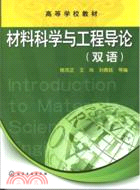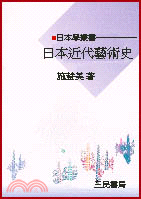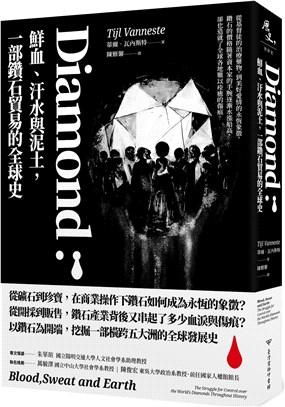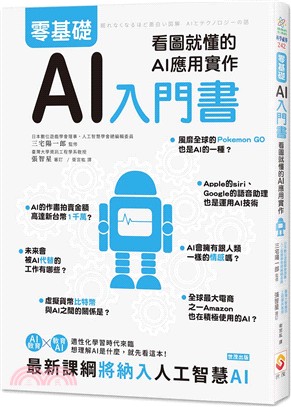相關商品
商品簡介
名人/編輯推薦
目次
商品簡介
由陳克正、王瑋、劉春延等編寫的《材料科學與工程導論(雙語)》是材
料科學與工程導論的雙語教材,以現行“材料科學與工程導論”課程標準為
依據,結合中文教材,以國外原版教材做參考并根據國內的教學情況及材料
科學研究的最新進展對教材內容進行適度的整合。全書共分9章,具體內容
包括:緒論,固體材料的結構,常用工程材料(高分子材料、金屬材料、陶
瓷材料和復合材料)的結構、力學性能、成分、加工工藝以及應用前景,常
用工程材料的化學性能(耐腐蝕性能)和物理性能(電、磁、熱和光學性能)以
及新型材料(生物材料、納米材料和智能材料)的介紹等內容。
《材料科學與工程導論(雙語)》可供大專院校材料科學與工程及相關專
業師生使用,也可供從事材料科學與工程研究、開發及管理的人員參考。
料科學與工程導論的雙語教材,以現行“材料科學與工程導論”課程標準為
依據,結合中文教材,以國外原版教材做參考并根據國內的教學情況及材料
科學研究的最新進展對教材內容進行適度的整合。全書共分9章,具體內容
包括:緒論,固體材料的結構,常用工程材料(高分子材料、金屬材料、陶
瓷材料和復合材料)的結構、力學性能、成分、加工工藝以及應用前景,常
用工程材料的化學性能(耐腐蝕性能)和物理性能(電、磁、熱和光學性能)以
及新型材料(生物材料、納米材料和智能材料)的介紹等內容。
《材料科學與工程導論(雙語)》可供大專院校材料科學與工程及相關專
業師生使用,也可供從事材料科學與工程研究、開發及管理的人員參考。
名人/編輯推薦
本書是由陳克正、王瑋、劉春延等人以現行“材料科學與工程導論”課程標準為依據,結合中文教材,以國外原版教材做參考并根據國內的實際教學情況及材料科學研究的最新進展對教材內容進行適度的整合,編寫出的適合我國大學本科生的《材料科學與工程導論》雙語教材。
教材共分9章,具體內容包括:緒論,固體材料的結構,常用工程材料(高分子材料、金屬材料、陶瓷材料和復合材料)的結構、力學性能、成分、加工工藝以及應用前景,常用工程材料的化學性能(耐腐蝕性能)和物理性能(電、磁、熱和光學性能)以及新型材料(生物材料、納米材料和智能材料)的介紹等。
教材共分9章,具體內容包括:緒論,固體材料的結構,常用工程材料(高分子材料、金屬材料、陶瓷材料和復合材料)的結構、力學性能、成分、加工工藝以及應用前景,常用工程材料的化學性能(耐腐蝕性能)和物理性能(電、磁、熱和光學性能)以及新型材料(生物材料、納米材料和智能材料)的介紹等。
目次
Chapter 1 Introduction1
Learning Objectives1
1.1 Historical Perspective1
1.2 What is Materials Science and Engineering?2
1.3 Why Study Materials Science and Engineering?5
1.4 Classification of Materials5
1.5 Advanced Materials9
1.6 Modern Materials’ Needs10
References11
Chapter 2 The Structure of Crystalline Solids13
Learning Objectives13
2.1 Atomic Structure and Interatomic Bonding13
2.1.1 Fundamental Concepts14
2.1.2 Bonding Forces and Energies14
2.1.3 Atomic Bonding in Solids16
2.2 Crystal Structures22
2.2.1 Fundamental Concepts22
2.2.2 Metallic Crystal Structures and Crystal Systems23
2.2.3 Crystallographic Points,Directions,and Planes30
2.2.4 Crystalline and Noncrystalline Materials37
2.3 Imperfections in Solids40
2.3.1 Point Defects in Metals40
2.3.2 Dislocations—Linear Defects43
2.3.3 Interfacial Defects44
2.3.4 Bulk or Volume Defects46
References48
Chapter 3 Polymer Materials49
Learning Objectives49
3.1 Polymer Structures49
3.1.1 Introduction49
3.1.2 Fundamental Concepts49
3.1.3 Polymer Molecules50
3.1.4 Designation of Polymers50
3.1.5 Commonly Used Polymers51
3.1.6 The Chemistry of Polymer Molecules58
3.2 Crystallization,Melting and Glass Transition Phenomena in Polymers65
3.3 Mechanical Properties of Polymers66
3.3.1 Stress-Strain Behavior67
3.3.2 Macroscopic Deformation68
3.3.3 Viscoelastic Deformation70
3.4 Polymer Types71
3.4.1 Plastics71
3.4.2 Elastomers72
3.4.3 Fibers73
3.4.4 Miscellaneous Applications Coatings73
3.5 Processing of Polymers74
3.5.1 Polymerization75
3.5.2 Polymer Additives76
3.5.3 Forming Techniques for Plastics78
3.5.4 Fabrication of Elastomers80
3.5.5 Fabrication of Fibers and Films81
References84
Chapter 4 Metallic Materials85
Learning Objectives85
4.1 Mechanical Properties of Metals85
4.1.1 Introduction85
4.1.2 Tensile Test86
4.1.3 Hardness Testing90
4.2 Dislocations and Strengthening91
4.2.1 The Role of Dislocations91
4.2.2 Work Hardening93
4.2.3 Grain Size Strengthening93
4.2.4 Alloy Hardening94
4.3 Failure96
4.3.1 Introduction96
4.3.2 Fundamentals of Fracture97
4.3.3 Ductile Fracture97
4.3.4 Brittle Fracture98
4.3.5 Fracture Mechanics in Design99
4.3.6 Fracture Toughness100
4.3.7 Fatigue101
4.3.8 Creep101
4.4 Phase Diagrams and Phase Transformations in Metals102
4.4.1 Introduction102
4.4.2 Phase Diagrams103
4.4.3 Phase Transformations107
4.5 Applications and Processing of Metal Alloys108
4.5.1 Introduction108
4.5.2 Types of Metal Alloys109
4.5.3 Fabrication of Metals113
4.5.4 Thermal Processing of Metals115
References120
Chapter 5 Ceramic Materials123
Learning Objectives123
5.1 Structures and Properties of Ceramics123
5.1.1 Introduction123
5.1.2 Ceramic Structures123
5.1.3 Mechanical Properties of Ceramics127
5.2 Application and Processing of Ceramics129
5.2.1 Types and Applications of Ceramics129
5.2.2 Fabrication and Processing of Ceramics131
References136
Chapter 6 Composite Materials137
Learning Objectives137
6.1 Introduction137
6.2 Particle-Reinforced Composites138
6.2.1 Large-Particle Composites139
6.2.2 Dispersion-Strengthened Composites140
6.3 Fiber-Reinforced Composites140
6.3.1 The Fiber Phase140
6.3.2 The Matrix Phase141
6.4 Polymer-Matrix Composites142
6.4.1 Glass Fiber-Reinforced Polymer(GFRP)Composites142
6.4.2 Carbon Fiber-Reinforced Polymer(CFRP)Composites143
6.4.3 Aramid Fiber-Reinforced Polymer Composites143
6.5 Metal-Matrix Composites145
6.6 Ceramic-Matrix Composites146
References149
Chapter 7 Corrosion and Degradation of Materials150
Learning Objectives150
7.1 Introduction150
7.2 Corrosion of Metals150
7.2.1 Electrochemical Considerations151
7.2.2 Corrosion Rates153
7.2.3 Passivity153
7.2.4 Environmental Effects153
7.2.5 Forms of Corrosion154
7.2.6 Corrosion Environments158
7.2.7 Corrosion Prevention159
7.3 Corrosion of Ceramic Materials159
7.4 Degradation of Polymers160
7.4.1 Swelling and Dissolution160
7.4.2 Bond Rupture160
7.4.3 Weathering161
References163
Chapter 8 Electrical/Thermal/Magnetic/Optical Properties of Materials164
Learning Objectives164
8.1 Introduction165
8.2 Electrical Properties of Materials165
8.2.1 Metals and Alloys166
8.2.2 Semiconductors167
8.2.3 Ionic Ceramics and Polymers170
8.3 Thermal Properties of Materials170
8.3.1 Heat Capacity170
8.3.2 Thermal Expansion171
8.3.3 Thermal Conductivity172
8.3.4 Thermal Stresses172
8.4 Magnetic Properties of Materials174
8.4.1 Diamagnetism,Paramagnetism and Ferromagnetism174
8.4.2 Antiferromagnetism and Ferrimagnetism177
8.4.3 The Influence of Temperature on Magnetic Behavior179
8.4.4 Domains,Hysteresis and Magnetic Anisotropy179
8.4.5 Superconductivity181
8.5 Optical Properties of Materials186
8.5.1 Interaction of Light with Matter186
8.5.2 Atomic and Electronic Interactions187
8.5.3 Refraction,Reflection,Absorption and Transmission190
8.5.4 Opacity and Translucency in Insulators192
8.5.5 Applications of Optical Phenomena192
References197
Chapter 9 Biomaterials/Nanomaterials/Smart Materials198
Learning Objectives198
9.1 Biomaterials198
9.1.1 Definition of Biomaterials199
9.1.2 Performance of Biomaterials202
9.1.3 Brief Historical Background203
9.2 Nanotechnology and Nanomaterials205
9.2.1 Introduction205
9.2.2 Examples of Current Achievements and Paradigm Shifts209
9.3 Smart Materials214
9.3.1 Introduction214
9.3.2 Shape Memory Alloys215
9.3.3 Applications of Smart Materials219
Reference220
Learning Objectives1
1.1 Historical Perspective1
1.2 What is Materials Science and Engineering?2
1.3 Why Study Materials Science and Engineering?5
1.4 Classification of Materials5
1.5 Advanced Materials9
1.6 Modern Materials’ Needs10
References11
Chapter 2 The Structure of Crystalline Solids13
Learning Objectives13
2.1 Atomic Structure and Interatomic Bonding13
2.1.1 Fundamental Concepts14
2.1.2 Bonding Forces and Energies14
2.1.3 Atomic Bonding in Solids16
2.2 Crystal Structures22
2.2.1 Fundamental Concepts22
2.2.2 Metallic Crystal Structures and Crystal Systems23
2.2.3 Crystallographic Points,Directions,and Planes30
2.2.4 Crystalline and Noncrystalline Materials37
2.3 Imperfections in Solids40
2.3.1 Point Defects in Metals40
2.3.2 Dislocations—Linear Defects43
2.3.3 Interfacial Defects44
2.3.4 Bulk or Volume Defects46
References48
Chapter 3 Polymer Materials49
Learning Objectives49
3.1 Polymer Structures49
3.1.1 Introduction49
3.1.2 Fundamental Concepts49
3.1.3 Polymer Molecules50
3.1.4 Designation of Polymers50
3.1.5 Commonly Used Polymers51
3.1.6 The Chemistry of Polymer Molecules58
3.2 Crystallization,Melting and Glass Transition Phenomena in Polymers65
3.3 Mechanical Properties of Polymers66
3.3.1 Stress-Strain Behavior67
3.3.2 Macroscopic Deformation68
3.3.3 Viscoelastic Deformation70
3.4 Polymer Types71
3.4.1 Plastics71
3.4.2 Elastomers72
3.4.3 Fibers73
3.4.4 Miscellaneous Applications Coatings73
3.5 Processing of Polymers74
3.5.1 Polymerization75
3.5.2 Polymer Additives76
3.5.3 Forming Techniques for Plastics78
3.5.4 Fabrication of Elastomers80
3.5.5 Fabrication of Fibers and Films81
References84
Chapter 4 Metallic Materials85
Learning Objectives85
4.1 Mechanical Properties of Metals85
4.1.1 Introduction85
4.1.2 Tensile Test86
4.1.3 Hardness Testing90
4.2 Dislocations and Strengthening91
4.2.1 The Role of Dislocations91
4.2.2 Work Hardening93
4.2.3 Grain Size Strengthening93
4.2.4 Alloy Hardening94
4.3 Failure96
4.3.1 Introduction96
4.3.2 Fundamentals of Fracture97
4.3.3 Ductile Fracture97
4.3.4 Brittle Fracture98
4.3.5 Fracture Mechanics in Design99
4.3.6 Fracture Toughness100
4.3.7 Fatigue101
4.3.8 Creep101
4.4 Phase Diagrams and Phase Transformations in Metals102
4.4.1 Introduction102
4.4.2 Phase Diagrams103
4.4.3 Phase Transformations107
4.5 Applications and Processing of Metal Alloys108
4.5.1 Introduction108
4.5.2 Types of Metal Alloys109
4.5.3 Fabrication of Metals113
4.5.4 Thermal Processing of Metals115
References120
Chapter 5 Ceramic Materials123
Learning Objectives123
5.1 Structures and Properties of Ceramics123
5.1.1 Introduction123
5.1.2 Ceramic Structures123
5.1.3 Mechanical Properties of Ceramics127
5.2 Application and Processing of Ceramics129
5.2.1 Types and Applications of Ceramics129
5.2.2 Fabrication and Processing of Ceramics131
References136
Chapter 6 Composite Materials137
Learning Objectives137
6.1 Introduction137
6.2 Particle-Reinforced Composites138
6.2.1 Large-Particle Composites139
6.2.2 Dispersion-Strengthened Composites140
6.3 Fiber-Reinforced Composites140
6.3.1 The Fiber Phase140
6.3.2 The Matrix Phase141
6.4 Polymer-Matrix Composites142
6.4.1 Glass Fiber-Reinforced Polymer(GFRP)Composites142
6.4.2 Carbon Fiber-Reinforced Polymer(CFRP)Composites143
6.4.3 Aramid Fiber-Reinforced Polymer Composites143
6.5 Metal-Matrix Composites145
6.6 Ceramic-Matrix Composites146
References149
Chapter 7 Corrosion and Degradation of Materials150
Learning Objectives150
7.1 Introduction150
7.2 Corrosion of Metals150
7.2.1 Electrochemical Considerations151
7.2.2 Corrosion Rates153
7.2.3 Passivity153
7.2.4 Environmental Effects153
7.2.5 Forms of Corrosion154
7.2.6 Corrosion Environments158
7.2.7 Corrosion Prevention159
7.3 Corrosion of Ceramic Materials159
7.4 Degradation of Polymers160
7.4.1 Swelling and Dissolution160
7.4.2 Bond Rupture160
7.4.3 Weathering161
References163
Chapter 8 Electrical/Thermal/Magnetic/Optical Properties of Materials164
Learning Objectives164
8.1 Introduction165
8.2 Electrical Properties of Materials165
8.2.1 Metals and Alloys166
8.2.2 Semiconductors167
8.2.3 Ionic Ceramics and Polymers170
8.3 Thermal Properties of Materials170
8.3.1 Heat Capacity170
8.3.2 Thermal Expansion171
8.3.3 Thermal Conductivity172
8.3.4 Thermal Stresses172
8.4 Magnetic Properties of Materials174
8.4.1 Diamagnetism,Paramagnetism and Ferromagnetism174
8.4.2 Antiferromagnetism and Ferrimagnetism177
8.4.3 The Influence of Temperature on Magnetic Behavior179
8.4.4 Domains,Hysteresis and Magnetic Anisotropy179
8.4.5 Superconductivity181
8.5 Optical Properties of Materials186
8.5.1 Interaction of Light with Matter186
8.5.2 Atomic and Electronic Interactions187
8.5.3 Refraction,Reflection,Absorption and Transmission190
8.5.4 Opacity and Translucency in Insulators192
8.5.5 Applications of Optical Phenomena192
References197
Chapter 9 Biomaterials/Nanomaterials/Smart Materials198
Learning Objectives198
9.1 Biomaterials198
9.1.1 Definition of Biomaterials199
9.1.2 Performance of Biomaterials202
9.1.3 Brief Historical Background203
9.2 Nanotechnology and Nanomaterials205
9.2.1 Introduction205
9.2.2 Examples of Current Achievements and Paradigm Shifts209
9.3 Smart Materials214
9.3.1 Introduction214
9.3.2 Shape Memory Alloys215
9.3.3 Applications of Smart Materials219
Reference220
主題書展
更多
主題書展
更多書展本週66折
您曾經瀏覽過的商品
購物須知
大陸出版品因裝訂品質及貨運條件與台灣出版品落差甚大,除封面破損、內頁脫落等較嚴重的狀態,其餘商品將正常出貨。
特別提醒:部分書籍附贈之內容(如音頻mp3或影片dvd等)已無實體光碟提供,需以QR CODE 連結至當地網站註冊“並通過驗證程序”,方可下載使用。
無現貨庫存之簡體書,將向海外調貨:
海外有庫存之書籍,等候約45個工作天;
海外無庫存之書籍,平均作業時間約60個工作天,然不保證確定可調到貨,尚請見諒。
為了保護您的權益,「三民網路書店」提供會員七日商品鑑賞期(收到商品為起始日)。
若要辦理退貨,請在商品鑑賞期內寄回,且商品必須是全新狀態與完整包裝(商品、附件、發票、隨貨贈品等)否則恕不接受退貨。

























